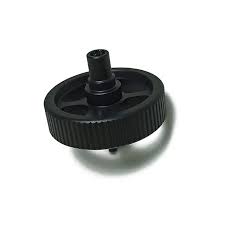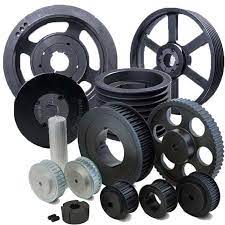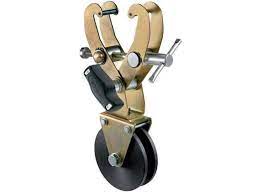Product Description
Display of China Wholesale Manufacture Alumina Wire rollers High Quality Coil Winding Machine Ceramic Wire Xihu (West Lake) Dis. Pulley with Bearing
Cable pulley wheels, wire cable pulley, flanged cable pulley, plastic cable pulley, nylon cable pulley.
Flanged ceramic roller, Wire guide pulleys (ceramic pulleys) is commonly used component when wire passing is required, it can be used in coil winding machine, cable machine and the textile machinery as well. The porcelain ring is mounted on the bearing, Coil winding wire guide pulley(wire roller) will rotate by the thread and wire passing on the surface of the ring. Thus the sliding friction has been converted to the static friction.
But at the start and stop, in order to overcome the inertia, there will be a partial sliding friction. The surface Polish degree of the porcelain ring reaches Ra0.2; The beating during rotation is under 0.15. We select the 99% Al2O3 as the material with the hardness of HRA88 and the density of 3.85…Two nylon side walls have been put to the both side of the ceramic ring and the bearing, coil winding wire guide pulley (wire roller) combines 1 wire roller
Cable pulley wheels, wire cable pulley, flanged cable pulley, plastic cable pulley, nylon cable pulley.
| Specification table of wire roller | |||||
| Modle No | A((mm) | B(mm) | C(mm) | D(mm) | E(mm) |
| HCR001-B03 | 20 | 15 | 3 | 4.8 | 3 |
| HCR002-B04 | 28.7 | 20 | 4 | 6.4 | 4 |
| HCR003-B03 | 30.4 | 15 | 3 | 10 | 3 |
| HCR004-B04 | 40 | 20 | 4 | 15 | 3 |
| HCR045-B04 | 45 | 4 | |||
| HCR045-B05 | 5 | ||||
| HCR045-B06 | 6 | ||||
| HCR005-B05 | 54.5 | 30 | 5 | 10 | 6 |
| HCR005-B06 | 6 | ||||
| HCR005-B07 | 7 | ||||
| HCR005-B08 | 8 | ||||
| HCR006-B07 | 60 | 40 | 7 | 13 | 7 |
| HCR006-B08 | 8 | ||||
| HCR006-B10 | 10 | ||||
| HCR006-B12 | 12 | ||||
| HCR007-B05 | 60 | 30 | 5 | 18 | 6 |
| HCR007-B06 | 6 | ||||
| HCR007-B07 | 7 | ||||
| HCR007-B08 | 8 | ||||
| HCR008-B10 | 79.2 | 50 | 10 | 15 | 9 |
| HCR009-B07 | 80.5 | 40 | 7 | 25 | 7 |
| HCR009-B08 | 8 | ||||
| HCR571-B10 | 99.3 | 50 | 10 | 29.5 | 9 |
Related Products
Information of our company
HARTAI Technology Industry Co., Ltd , found in 2001, is located in the beautiful city of China’s manufacturing industry HangZhou City. It is committed to nozzle, ruby products, tungsten carbide products, ceramic products, plastic crochet hook and precision machinery manufacturing .Our main products are nozzle, ceramic roller, jump wire preventer, various sizes of ceramic eyes, combination wire roller, ceramic wheel and non-standard parts, all kinds of tension and so on.
FAQ
Frequently Asked Question:
Q1. How long will I get a quotation?
The quotation will send to you within the 24h when we got your inquiry.
Q2. Can I get a sample?
Samples are available CHINAMFG customers request .
Q3. Can you do the design for us?
Yes, our factory can accept the OEM orders.
According to your drawing or sample to do it.
Q4. How long can I expect to get the sample and mass quantities?
Normally it takes 7days to produce the sample. Generally, 7-15 days for mass order. If urgent ,delivery time may be pushed by negotiation.
Q5. How about the delivery method?
The goods always sent by DHL,UPS,FEDEX, EMS by airplane ,or by sea.
We also can send the goods to your warehouse if you have warehouse in China.
Q6.What’s your terms of payment?
T/T ,50%deposit, 50%balance. Other payment methods such as Paypal, West Union, L/C are negotiable.
If you are interested in our Small Textile Machine Parts Wire Xihu (West Lake) Dis. Plastic Ceramic Pulley With Bearing , welcome to contact us.
| Classification: | Special Parts |
|---|---|
| Processing Type: | Metal Processing |
| Match Machine: | Spinning Equipment |
| Material: | Plastic |
| Processing Level: | Nano Machining |
| Mechanical Process: | Drilling |
| Customization: |
Available
| Customized Request |
|---|

What maintenance procedures are necessary to ensure the reliability of spinning pulleys?
To ensure the reliability of spinning pulleys, certain maintenance procedures should be followed. These procedures help identify and address potential issues, prevent premature wear, and extend the lifespan of the pulleys. Here are some essential maintenance procedures:
1. Regular Inspection:
Periodic visual inspections of spinning pulleys are necessary to identify any signs of wear, damage, misalignment, or abnormal operating conditions. Inspections can help detect issues such as worn grooves, cracks, excessive belt wear, loose fasteners, or inadequate lubrication.
2. Lubrication:
Proper lubrication is crucial for the smooth operation of spinning pulleys. Lubricants reduce friction between the pulley and the belt, rope, or cable, minimizing wear and heat generation. The type and frequency of lubrication depend on the specific application and the manufacturer’s recommendations.
3. Belt Tension Adjustment:
Maintaining proper belt tension is important to prevent slippage and ensure efficient power transmission. Regularly checking and adjusting the belt tension according to the manufacturer’s guidelines or industry standards is essential. Improper tension can lead to reduced power transfer, accelerated wear, and decreased overall system performance.
4. Belt Cleaning:
Contaminants such as dust, dirt, or debris can accumulate on the pulley and the belt, affecting their performance. Regular cleaning of the pulleys and the belts with appropriate methods, such as brushing or compressed air, helps remove these contaminants and prevents their buildup.
5. Alignment Checks:
Spinning pulleys should be properly aligned to ensure smooth and efficient power transmission. Misalignment can cause increased stress on the pulleys, belts, and other power transmission components, leading to premature wear and potential system failures. Regular alignment checks using alignment tools or laser alignment systems help identify and correct misalignment issues.
6. Balancing:
Imbalanced spinning pulleys can result in vibration, which can adversely affect the overall system performance and lead to premature wear or failure of the pulleys and other components. Balancing procedures, such as adding balance weights or utilizing dynamic balancing equipment, can help minimize vibration and ensure smooth operation.
7. Repair or Replacement:
If any significant damage or wear is detected during inspections or maintenance procedures, appropriate repair or replacement actions should be taken promptly. This may involve repairing damaged pulley surfaces, replacing worn-out belts, or replacing the entire pulley if necessary.
8. Documentation and Record-Keeping:
Maintaining comprehensive records of maintenance activities, including inspection dates, lubrication schedules, adjustments, repairs, and replacements, is essential. These records help track the maintenance history of spinning pulleys, identify patterns or recurring issues, and facilitate proactive maintenance planning.
By following these maintenance procedures, the reliability and performance of spinning pulleys can be maximized, ensuring their optimal operation and contributing to the overall efficiency and longevity of the machinery or equipment they are a part of.

What are some real-world examples of spinning pulley applications in various industries?
Spinning pulleys find widespread applications in various industries, contributing to the smooth operation of different machines and systems. Here are some real-world examples of spinning pulley applications in various industries:
1. Manufacturing and Industrial Machinery:
– Conveyor Systems: Spinning pulleys are extensively used in conveyor systems across industries such as manufacturing, logistics, and mining. They help drive and guide conveyor belts, enabling the efficient movement of materials or products.
– Printing Presses: In the printing industry, spinning pulleys are crucial components in printing presses. They facilitate the movement of paper or printing substrates, ensuring precise registration and consistent printing quality.
– Machine Tools: Spinning pulleys are found in various machine tools like lathes, milling machines, and drill presses. They enable speed control and power transmission, allowing for different machining operations.
2. Automotive Industry:
– Engine Systems: Spinning pulleys are used in automotive engines to drive various components such as the alternator, water pump, power steering pump, and air conditioning compressor.
– Timing Systems: Timing pulleys and belts are employed in the engine’s timing system to synchronize the rotation of the camshaft and crankshaft, ensuring precise valve timing.
3. Textile Industry:
– Spinning and Weaving Machines: Spinning pulleys are integral to spinning and weaving machines in the textile industry. They facilitate the movement of fibers or yarns, ensuring proper tension and controlled feeding.
– Dyeing and Printing Machines: Spinning pulleys play a role in dyeing and printing machines by guiding fabrics through the dyeing or printing processes, ensuring accurate color application and pattern alignment.
4. Construction and Heavy Equipment:
– Cranes and Hoists: Rope pulleys, also known as sheaves, are used in cranes and hoists to provide mechanical advantage and facilitate lifting or load-bearing operations.
– Excavators and Loaders: Spinning pulleys are employed in construction equipment like excavators and loaders to transfer power and enable the movement of buckets or other attachments.
5. Agricultural Machinery:
– Harvesting Equipment: Spinning pulleys are used in agricultural machinery such as combine harvesters to drive components like the cutting platform or conveyor belts.
– Irrigation Systems: Pulleys are utilized in irrigation systems to drive pumps or control the movement of irrigation pipes or tubes.
6. HVAC Systems:
– Air Handling Units: Spinning pulleys are used in air handling units to drive fans and facilitate air circulation and ventilation.
– Cooling Towers: Pulleys are employed in cooling towers to drive the fan blades, promoting efficient cooling of water or other fluids.
These are just a few examples of spinning pulley applications in various industries. Spinning pulleys play a vital role in many other sectors, including mining, food processing, packaging, woodworking, and more. The versatility and functionality of spinning pulleys make them essential components in numerous machines and systems across different industries.

What is a spinning pulley, and how is it used in mechanical systems?
A spinning pulley is a type of pulley that rotates or spins when subjected to force or power. It is a wheel with a grooved rim designed to guide a rope, belt, or cable, allowing it to change direction and transmit mechanical power. Here’s a detailed explanation of what a spinning pulley is and how it is used in mechanical systems:
A spinning pulley consists of a central hub and a rim or groove around its circumference. The rim is specifically designed to accommodate a rope, belt, or cable, and the groove ensures that the rope or belt remains in place during operation. When force or power is applied to the rope or belt, it causes the spinning pulley to rotate.
In mechanical systems, spinning pulleys are commonly used in conjunction with other pulleys to create a mechanical advantage or to transmit power and motion between different components. Here are some key applications and uses of spinning pulleys:
1. Change Direction of Force:
A spinning pulley can change the direction of force applied to a rope or belt. By routing the rope or belt through the groove of the spinning pulley, the force can be redirected to another location or component in the system. This is particularly useful in applications where the input and output components are not aligned or when flexibility in direction is required.
2. Transmit Power:
Spinning pulleys are often used in power transmission systems to transfer mechanical power from one component to another. By connecting multiple spinning pulleys with ropes or belts, the rotation of one pulley can drive the rotation of another. This allows power to be transferred over distances and around obstacles, enabling the operation of various mechanical devices.
3. Create Mechanical Advantage:
Spinning pulleys are crucial in creating mechanical advantage by utilizing the principle of leverage. By using a combination of different-sized spinning pulleys, mechanical systems can amplify or reduce the force required to perform a particular task. This is achieved by adjusting the relative sizes of the pulleys and the number of times the rope or belt wraps around them.
4. Tensioning and Control:
Spinning pulleys are commonly employed in systems that require tensioning and control of ropes or belts. By adjusting the position and angle of the spinning pulley, the tension in the rope or belt can be controlled. This is important for maintaining proper alignment, preventing slippage, and ensuring efficient power transmission within the mechanical system.
5. Speed Control:
In some mechanical systems, spinning pulleys are used to control the speed of rotating components. By using pulleys of different sizes, the rotational speed can be increased or decreased. This is achieved by changing the ratio of the pulley diameters, which alters the speed at which the rope or belt travels around the pulleys.
Overall, spinning pulleys are essential components in mechanical systems. They enable the redirection of force, transmission of power, creation of mechanical advantage, tensioning and control of ropes or belts, and speed control of rotating components. Their versatility and ability to change the direction of force make them valuable in a wide range of applications, from simple machines to complex industrial systems.


editor by CX
2023-11-21